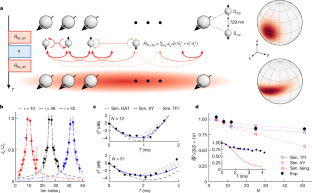2023-09-25 ノースカロライナ州立大学(NCState)

◆この課題に対処するのがMonoXiverです。MonoXiverは、AIに2D画像内のオブジェクトの周りに3Dバウンディングボックスを生成させ、これにより既存の技術の精度を大幅に向上させます。これは自動運転車などの応用分野で特に役立つものであり、コンピュータビジョンの発展に貢献します。
<関連情報>
周辺領域ノイズ除去を用いた単眼での3D物体検出
Monocular 3D Object Detection with Bounding Box Denoising in 3D by Perceiver
Xianpeng Liu, Ce Zheng, Kelvin Cheng, Nan Xue, Guo-Jun Qi, Tianfu Wu
arXiv Submitted on 3 Apr 2023
DOI:https://doi.org/10.48550/arXiv.2304.01289
The main challenge of monocular 3D object detection is the accurate localization of 3D center. Motivated by a new and strong observation that this challenge can be remedied by a 3D-space local-grid search scheme in an ideal case, we propose a stage-wise approach, which combines the information flow from 2D-to-3D (3D bounding box proposal generation with a single 2D image) and 3D-to-2D (proposal verification by denoising with 3D-to-2D contexts) in a top-down manner. Specifically, we first obtain initial proposals from off-the-shelf backbone monocular 3D detectors. Then, we generate a 3D anchor space by local-grid sampling from the initial proposals. Finally, we perform 3D bounding box denoising at the 3D-to-2D proposal verification stage. To effectively learn discriminative features for denoising highly overlapped proposals, this paper presents a method of using the Perceiver I/O model to fuse the 3D-to-2D geometric information and the 2D appearance information. With the encoded latent representation of a proposal, the verification head is implemented with a self-attention module. Our method, named as MonoXiver, is generic and can be easily adapted to any backbone monocular 3D detectors. Experimental results on the well-established KITTI dataset and the challenging large-scale Waymo dataset show that MonoXiver consistently achieves improvement with limited computation overhead.



